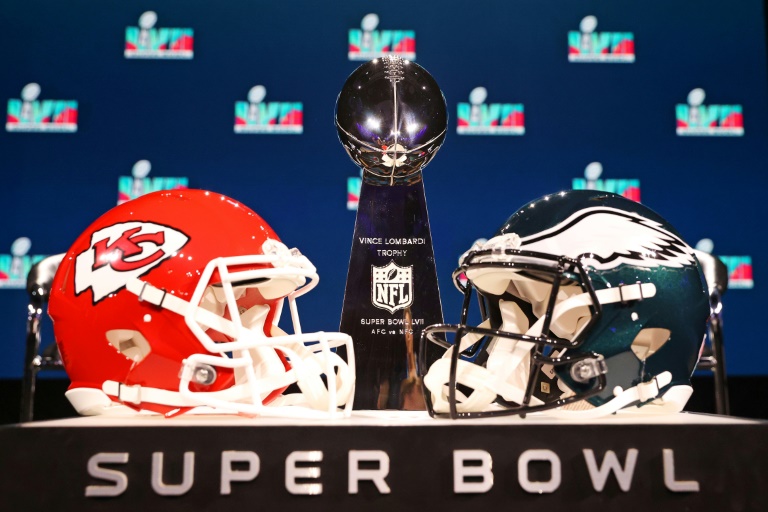After a starring role in last year’s Super Bowl broadcast, cryptocurrency firms are expected to sit out the 2023 game.
But the annual advertising extravaganza — a kind of competition among marketers that runs parallel to the American football championship — features an array of beer and car companies, along with other familiar brands like M&M’s candies, which has been teasing its spot since last month.
This year’s slate of commercials revives the cult hit “Breaking Bad,” whose cast reunites to pitch PopCorners chips, as well as a collaboration between General Motors and Netflix that shows an electric car navigating “Squid Games” and other settings from streaming hits.
The spots garner top dollar, typically $6 or $7 million for 30 seconds of air time. That’s roughly 10 times the cost of an ad during the 2022 World Cup match between the United States and Britain.
Last year’s game generated $578 million in advertising revenues for NBC, up $143.8 million from the prior year’s telecast, according to Kantar, a data analytics and brand consultancy.
This year’s game is being telecast by Fox Sports.
“It’s a lot of money for a media spot,” said Derek Rucker, a marketing professor at Northwestern University. But “where else can you get 100 million people to see an ad at the same time?”
The ads have become such as big component of the game in the United States that among “a massive number of people, you have consumers who actively watch and discuss the commercials” at gatherings, Rucker said.
– Keeping it light –
Held each year in the dead of winter, “Super Bowl Sunday” marks an occasion for families and friends to gather for several hours of competition, revelry and entertainment.
This year’s game will be between the Kansas City Chiefs and the Philadelphia Eagles. As always, the show includes A-list half-time entertainment, this time headlined by Rihanna.
Over-the-top ads are an old tradition and include such epochal spots as Ridley Scott’s minute-long commercial for Apple in 1984 announcing the Macintosh computer.
The spot, which features a female athlete smashing a screen showing a “Big Brother” figure, riffs on the famous novel by George Orwell, concluding with a vow that the computer’s arrival will show “why 1984 won’t be like ‘1984.’”
This year’s most anticipated commercial may be for M&M’s, which began tiptoeing into the US cultural wars a few weeks ago.
On January 24, M&M’s, which is owned by Mars, announced it was freezing a publicity drive featuring cartoon mascots of the colored candies after the campaign was criticized as “woke” by US conservatives because of stylistic changes, such as the introduction of a purple character, a color associated with the LGBTQ community.
M&M’s announced an “indefinite pause” of the “spokescandies” and unveiled a new brand ambassador — the popular comedian Maya Rudolph — in a shift that was timed perfectly for grabbing public attention ahead of a splashy Super Bowl ad.
Andrew Frank, an analyst at Gartner, does not expect politically controversial ads this year, predicting brands will navigate carefully in a divided country where strident messages can backfire.
“The antidote to backlash is humor, keeping it light,” Frank said. “I think they would like to deescalate all of the toxicity around culture wars and things like that.”
– Beer bash –
Last year’s game featured several prominent spots on the emerging cryptocurrency market, led by the then-titan FTX and its founder Samuel Bankman-Fried.
Since then, FTX has collapsed and Bankman-Fried has been indicted for fraud.
The fall of FTX and Bankman-Fried has created “an appropriate time for them to take a pause,” Frank said.
Countering that loss of advertising, broadcaster Fox can count on revenues from a wider range of beer companies following the expiration of a longstanding exclusivity deal with Anheuser-Busch, the owner of the Budweiser brand.
Frank expects most spots will go after “leisure spending with lighthearted messages of escapist entertainment,” he said.
The aim is to “impart a sense that everything is okay and that you don’t need to be so frugal about your discretionary spending.”

 Business4 months ago
Business4 months ago
 Business5 months ago
Business5 months ago
 Events3 months ago
Events3 months ago
 People4 months ago
People4 months ago
 Events6 months ago
Events6 months ago




